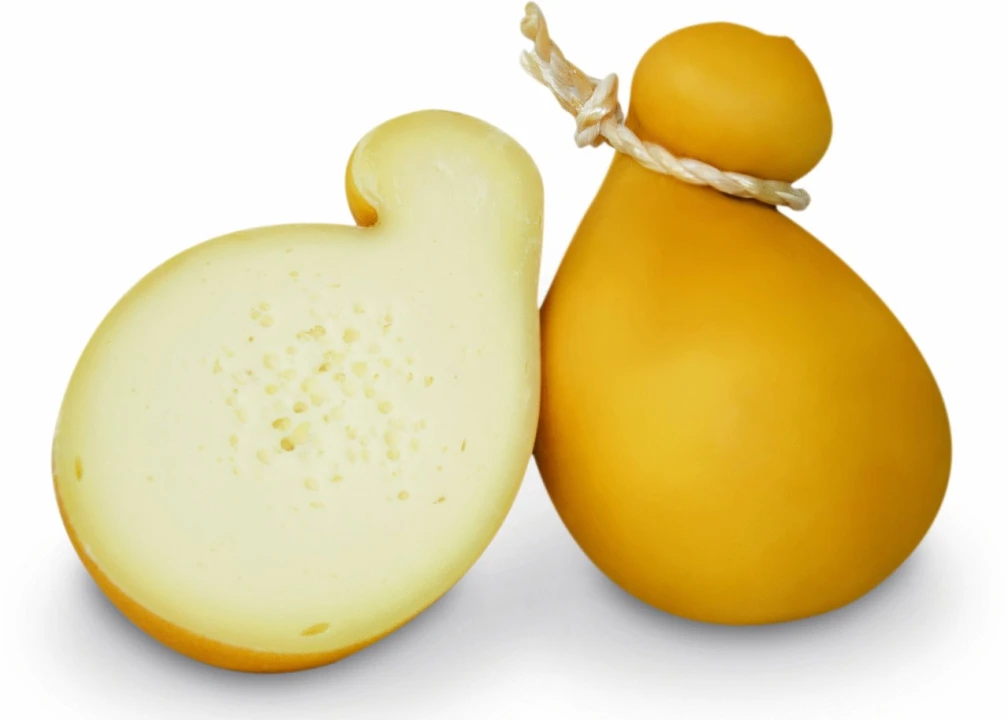Caciocavallo Silano DOP is without doubt one of the oldest and most typical spun curd cheeses of southern Italy. It was mentioned by Hippocrates in 500 B.C. when describing the art used by the Greeks when preparing “Cacio” (cheese). This dairy tradition, which originated in the Sila Plateau, gradually expanded along the Apennine ridge in southern Italy.
There are various theories regarding the etymology of the term “Caciocavallo”, the most widely accepted of which claims that it is derived from the method of maturing the cheese, which is linked in pairs of wooden poles “a cavallo” (in tandem).
Another interesting hypothesis on the word’s origin comes from a Neapolitan document from the nineteenth century on markets from that era. In particular, the text discusses horses (cavalli) and donkeys, the precious sole means of transportation, and how they were “dressed up” with pairs of these cheeses.
The aim of this typical peasant custom was to combine the convenience of transport with a public demonstration of affluence.
The product
Caciocavallo Silano obtained European DOP (Protected Designation of Origin) status in 1996 and this label guarantees its authenticity and healthiness.
This cheese is made exclusively from fresh whole milk from cattle farms located in the areas listed in the product specifications, using a scrupulously defined process that has its roots in the noblest dairy traditions of the south.
The fire brand, which depicts a pine, attests to the cheese’s authenticity. This mark, together with the details of the EU regulations under which the designation was registered and the identification number, which refers to the individual producer, must be stamped on the labels attached to each wheel released for consumption.
Production
The production of Caciocavallo Silano DOP begins by coagulating the fresh milk at a temperature of 36/38° using calf or kid goat rennet paste. After several minutes, the curd is broken up into hazelnut-sized lumps.
The next stage involves maturing the curd and consists of vigorously fermenting the milk. This process lasts an average of 4 to 10 hours and may require more time depending on the acidity of the processed milk, the temperature, the mass and other factors.
The cheese has finished maturing when it is ready to be spun. Checks are carried out by taking small parts of the cheese and immersing them in almost boiling water to test their elasticity and therefore whether it can be spun. This is followed by a typical operation that consists of forming a kind of rope, which is moulded into the desired shape.
Next the cheese is closed at the top of each individual piece by quickly dipping that part in boiling water and completing the operation by hand. The shapes moulded in this way are first immersed in cooling water and then in brine for salting, which is carried out through immersion for a variable time period depending on the weight.
Once taken out of the brine, the cheeses are tied in pairs with special ties and suspending from poles to mature, which takes a minimum of 30 days. The next stage is the fire branding. The cheese may be oval or conical, with or without a testina (head), depending on the local customs. Its weight varies between 1 kg and 2.5 kg.
Its crust is thin, smooth and has a distinctive straw colour. The cheese is consistent and firm with a very delicate aromatic flavour and tends to be sweet when it is young, becoming spicier as it matures.
The local area
The patchy area in which Caciocavallo Silano DOP is produced is mainly located along the southern Italian Apennine range, uniting specific regions well known for their suitability, located in Basilicata, Calabria, Campania, Molise and Puglia, a group that constitutes a social, historical and environmental representation of typical southern production.
Only milk from certified farms within the areas indicated in the product specifications can be used to produce, and therefore attain the protected designation of origin referring to, Caciocavallo Silano cheese.
Caciocavallo Silano is currently made by around 25 dairies and around 400 livestock companies provide the milk used in its production.
By Consorzio di Tutela Formaggio Caciocavallo Silano DOP with MASAF




